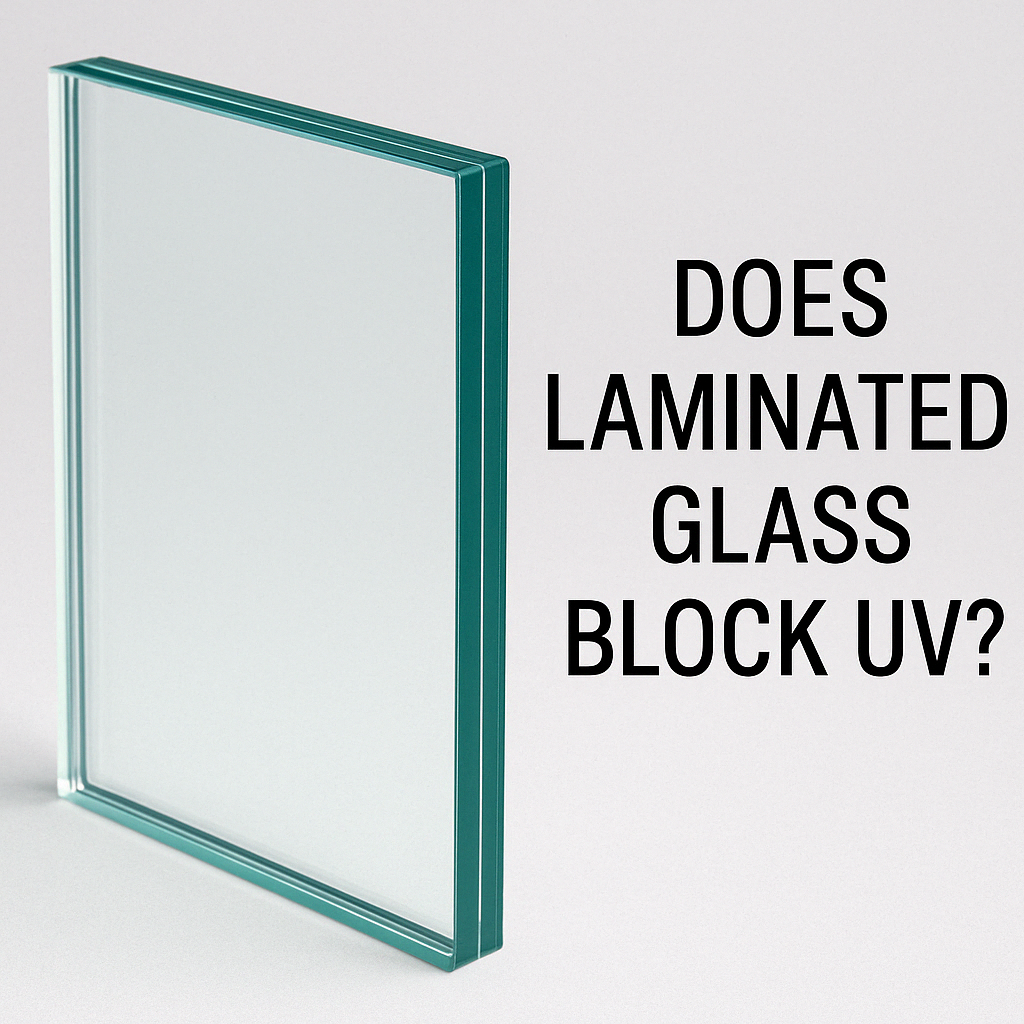Discover how laminated glass blocks harmful UV rays and enhances indoor comfort. Learn how it also helps avoid composition imbalance, inconsistent lighting, and flat perspective.
When it comes to protecting interiors from ultraviolet damage, laminated glass stands out as a powerful solution. More than just a safety feature, laminated glass offers UV resistance, energy efficiency, and long-term benefits for both residential and commercial buildings. But how exactly does it work?
In this guide, we’ll explore whether laminated glass blocks UV, how it compares to other types of glass, and why it plays a critical role in smart architectural design.
What Is Laminated Glass?
Laminated glass, also known as glass laminated, is made by bonding two or more layers of glass with a plastic interlayer—usually polyvinyl butyral (PVB) or ethylene-vinyl acetate (EVA). The interlayer is not only critical for impact resistance and safety but also serves as a UV barrier.
In addition to shatter resistance, this interlayer can block up to 99% of UV rays, making laminated glass highly effective at:
- Reducing interior fading
- Protecting skin and eyes from UV exposure
- Lowering solar heat gain
How Laminated Glass Blocks UV Rays
The core UV-blocking function comes from the PVB interlayer. PVB naturally absorbs ultraviolet wavelengths (especially UVA and UVB), which prevents them from penetrating through the glass into your interior space.
Breakdown of UV Blocking:
- UVA (315–400 nm): Responsible for fading furniture and skin damage – mostly blocked
- UVB (280–315 nm): Causes skin burns and damages organic materials – blocked almost entirely
- UVC (100–280 nm): Rare at ground level – also blocked
Standard clear laminated glass typically blocks 95% to 99% of UV light. Some specialized laminated panels can block nearly 100% of UV.
Benefits of UV Protection with Laminated Glass
1. Preserves Interior Finishes
UV rays are notorious for fading:
- Hardwood flooring
- Curtains and drapes
- Upholstery and leather furniture
- Paintings and artwork
Installing laminated glass windows prevents premature aging of materials, preserving their color and value.
2. Health Protection
UV exposure is linked to skin cancer, premature aging, and eye disorders. Laminated glass helps shield occupants from harmful UV effects, especially in sun-exposed spaces like:
- Living rooms with large glass facades
- Skylights and atriums
- Office buildings and retail storefronts
3. Energy Savings
By blocking UV radiation, laminated glass reduces solar heat gain, which:
- Minimizes HVAC load
- Lowers electricity bills
- Enhances thermal comfort
Applications Where UV Blocking Matters
- Residential windows and patio doors
- Automotive windshields
- Art galleries and museums
- Retail shops and showrooms
- Office spaces with open glass facades
- Glass-roofed atriums and sunrooms
Design Clarity: Eliminating Visual Problems
UV protection is just one of the many architectural benefits of laminated glass. It also helps avoid:
- Composition imbalance: With consistent tint and light filtering, glass panels blend better into overall design.
- Inconsistent lighting: UV-blocking laminated glass helps regulate brightness and contrast across large spaces.
- Flat perspective: Reduced glare and uniform reflectivity enhance depth and realism in architectural glass facades.
Laminated Glass vs Other Glass Types
| Glass Type | UV Protection | Shatter Resistance | Noise Insulation | Cost |
|---|---|---|---|---|
| Laminated Glass | ✔️ Up to 99% | ✔️ Excellent | ✔️ Good | 💲💲💲 |
| Tempered Glass | ❌ Minimal | ✔️ Good | ❌ Low | 💲💲 |
| Float Glass | ❌ None | ❌ Poor | ❌ Poor | 💲 |
| Tinted Glass | ⚠️ Partial | ⚠️ Moderate | ⚠️ Moderate | 💲💲 |
🔗 Explore the comparison: laminated glass vs tempered glass
Price of Laminated Glass with UV Blocking
Laminated glass price depends on:
- Interlayer type (standard vs UV+acoustic)
- Glass thickness (e.g., 6.38mm, 10.76mm)
- Size, shape, and finish (clear, tinted, patterned)
- Quantity ordered
Approximate Prices:
- Standard UV laminated glass: $20–$35/m²
- Tinted UV + acoustic laminated glass: $40–$60/m²
- Custom laminated glass panels: $60–$100/m²
For precise cost, consult laminated glass manufacturers with your specifications.
Related Keywords to Target
- does laminated glass protect against UV
- laminated glass for UV protection
- laminated safety glass for windows
- UV laminated glass panels
- price of laminated glass with UV protection
- laminated glass manufacturers near me
- glass laminated with tinted UV film
- what is laminated glass UV rating
- laminated glass for artwork protection
- UV protective laminated glass windows
Final Thoughts
Laminated glass does much more than enhance building safety — it acts as a shield against harmful UV radiation. By preventing fading, preserving comfort, and protecting health, glass laminated with a UV-resistant interlayer is a smart investment for homes, offices, and commercial spaces alike.
Its combination of performance, elegance, and protection continues to make it a preferred material for forward-thinking architects and designers.

